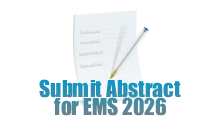Information For...

Important Presenter Dates
Milestone
Due
Abstracts
2-6-26
Speaker Registration
6-19-26
Presentations
7-10-26
Papers
9-11-26
